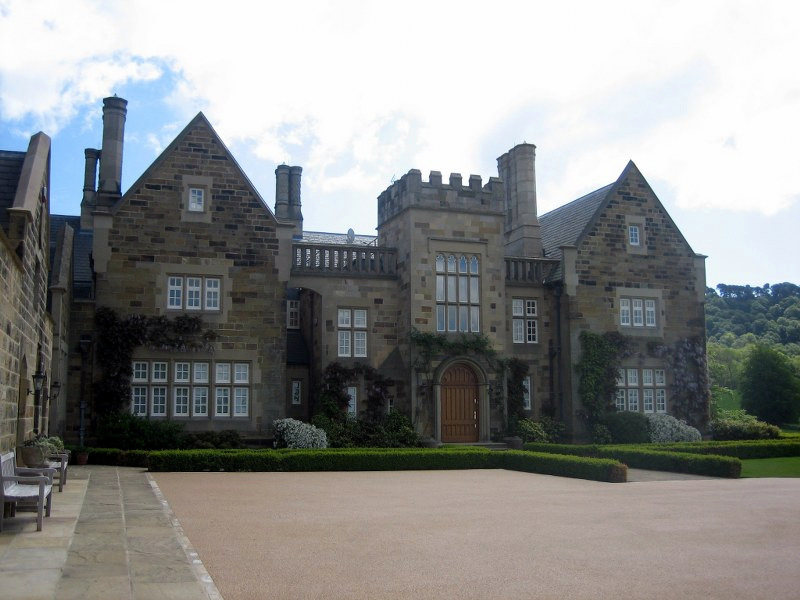|
Kepwick
Kepwick is a village and civil parish in the Hambleton district of North Yorkshire, England, on the North York Moors and near the A19. The population according to the 2011 Census was fewer than 100 and, whilst the details are included in the civil parish of Nether Silton, North Yorkshire County Council estimated the population to be about 90 in 2015. History The village is mentioned twice in the '' Domesday Book'' as either ''Chipuic'' or ''Capuic'' in the ''Allerton hundred''. ''Chipuic'' or ''Capuic'' is translated from Old Scandinavian as meaning ''market-place''. At the time of the Norman invasion the manor was split among ''Orm, son of Gamil'', ''Arnketil'' and ''Gillemicel''. Afterwards some of the land remained with the Crown but some was granted to ''Hugh, son of Baldric'' as the main tenant. Until the 13th century the lands were granted to the ''Mowbray'' family, who installed mesne lordships to the ''Nevill'' and ''Malbiche'' families. The manor then passed to ... [...More Info...] [...Related Items...] OR: [Wikipedia] [Google] [Baidu] |
Civil Parishes In North Yorkshire
This is a list of civil parishes in the ceremonial county of North Yorkshire, England, including Stockton-on-Tees (south of the river). There are 773 civil parishes, most of the county being parished. Unparished areas include the former Harrogate Municipal Borough, except for Pannal and Burn Bridge, parts of the former Teesside County Borough, part of the former Scarborough Municipal Borough and the former York County Borough. For the part of the Borough of Stockton-on-Tees north of the River Tees, see List of civil parishes in County Durham. Population figures are unavailable for some of the smallest parishes. See also * List of civil parishes in England References External links Office for National Statistics : Geographical Area Listings {{North Yorkshire North Yorkshire Civil parishes In England, a civil parish is a type of Parish (administrative division), administrative parish used for Local government in England, local government. It is a territorial ... [...More Info...] [...Related Items...] OR: [Wikipedia] [Google] [Baidu] |
Cowesby
Cowesby is a village and civil parish in the Hambleton District of North Yorkshire, England. Part of the village including The Cowesby Hall Estate is within the North York Moors National Park and about north of Thirsk. The population of the civil parish was estimated at 70 in 2014. In the 2011 census the population of Cowesby was included with Kirby Knowle parish and not counted separately. History The village is mentioned in the ''Domesday Book'' as being in the ''Allerton'' Hundred and listed as ''Cahosbi''. At the time of the Norman invasion the lands were recorded as belonging to Edwin, Earl of Mercia, but were ceded soon afterwards to King William I, though the manor was in the hands of '' Hugh, son of Baldric''. Governance The village lies within the Thirsk and Malton UK Parliament constituency. It also lies within the Thirsk electoral district of North Yorkshire County Council. The village is within the Whitestonecliffe ward of Hambleton District Council. The paris ... [...More Info...] [...Related Items...] OR: [Wikipedia] [Google] [Baidu] |
Nether Silton
Nether Silton is a village and civil parish in the Hambleton District of North Yorkshire, England. It lies east of Northallerton, on the border of the North York Moors national park. During 1870–72 Nether Silton was described as, "a chapelry in Leake, North Yorkshire, Leake parish, N. R. Yorkshire; 6½ miles E of Northallerton r. station. Post town, Thirsk. Real property, £1,702. Pop. 178. Houses, 45." by John Marius Wilson, ''Imperial Gazetteer of England and Wales''. Then and now Boundary classification and growth Historically areas were classified into Ancient Counties, alternatively known as Historic counties of England, Nether Silton was within the county of Yorkshire. These Ancient Counties were then separated further, Nether Silton was within the North Riding of Yorkshire. Areas were then separated into Poor Law Union/Registration district, Nether Silton came under Northallerton. Nether Silton then became part of Birdforth, an Ancient District. Then formed part of a ... [...More Info...] [...Related Items...] OR: [Wikipedia] [Google] [Baidu] |
Sandstone
Sandstone is a clastic sedimentary rock composed mainly of sand-sized (0.0625 to 2 mm) silicate grains. Sandstones comprise about 20–25% of all sedimentary rocks. Most sandstone is composed of quartz or feldspar (both silicates) because they are the most resistant minerals to weathering processes at the Earth's surface. Like uncemented sand, sandstone may be any color due to impurities within the minerals, but the most common colors are tan, brown, yellow, red, grey, pink, white, and black. Since sandstone beds often form highly visible cliffs and other topographic features, certain colors of sandstone have been strongly identified with certain regions. Rock formations that are primarily composed of sandstone usually allow the percolation of water and other fluids and are porous enough to store large quantities, making them valuable aquifers and petroleum reservoirs. Quartz-bearing sandstone can be changed into quartzite through metamorphism, usually r ... [...More Info...] [...Related Items...] OR: [Wikipedia] [Google] [Baidu] |
Villages In North Yorkshire
A village is a clustered human settlement or community, larger than a hamlet but smaller than a town (although the word is often used to describe both hamlets and smaller towns), with a population typically ranging from a few hundred to a few thousand. Though villages are often located in rural areas, the term urban village is also applied to certain urban neighborhoods. Villages are normally permanent, with fixed dwellings; however, transient villages can occur. Further, the dwellings of a village are fairly close to one another, not scattered broadly over the landscape, as a dispersed settlement. In the past, villages were a usual form of community for societies that practice subsistence agriculture, and also for some non-agricultural societies. In Great Britain, a hamlet earned the right to be called a village when it built a church. [...More Info...] [...Related Items...] OR: [Wikipedia] [Google] [Baidu] |
Cleveland Way
The Cleveland Way is a National Trail in the historic area of Cleveland in North Yorkshire, northern England. It runs between Helmsley and the Brigg at Filey, skirting the North York Moors National Park. History Development of the Cleveland Way began in the 1930s when the Teesside Ramblers' Association pressed for the creation of a long-distance path in the north-east of Yorkshire linking the Hambleton Drove Road, the Cleveland escarpment and footpaths on the Yorkshire coast. Subsequently, in 1953, a formal proposal to create the route was submitted to the North Riding of Yorkshire Council by the National Parks Commission. The trail was officially opened in 1969. It was the second official National Trail to be opened. Route The trail can be walked in either direction linking the trailheads of Helmsley () and Filey () in a horseshoe configuration. The trail is waymarked along its length using the standard National Trail acorn symbol. The trail falls into two roughl ... [...More Info...] [...Related Items...] OR: [Wikipedia] [Google] [Baidu] |
River Swale
The River Swale in Yorkshire, England, is a major tributary of the River Ure, which becomes the River Ouse, that empties into the North Sea via the Humber Estuary. The river gives its name to Swaledale, the valley through which it flows. The river and its valley are home to many types of flora and fauna typical to the Yorkshire Dales. Like similar rivers in the region, the river carves through several types of rock and has features typical of both river and glacial erosion. The River Swale has been a contributory factor in the settlements that have been recorded throughout its history. It has provided water to aid in the raising of crops and livestock, but also in the various mining activities that have occurred since Roman times and before. The river is said to be the fastest flowing in England and its levels have been known to rise in 20 minutes. Annual rainfall figures average 1800 mm p.a. in the headwaters and 1300 mm p.a. in the lower waters over a drop of ... [...More Info...] [...Related Items...] OR: [Wikipedia] [Google] [Baidu] |
Protestant Reformation
The Reformation (alternatively named the Protestant Reformation or the European Reformation) was a major movement within Western Christianity in 16th-century Europe that posed a religious and political challenge to the Catholic Church and in particular to papal authority, arising from what were perceived to be Criticism of the Catholic Church, errors, abuses, and discrepancies by the Catholic Church. The Reformation was the start of Protestantism and the split of the Western Church into Protestantism and what is now the Roman Catholic Church. It is also considered to be one of the events that signified the end of the Middle Ages and the beginning of the early modern period in Europe.Davies ''Europe'' pp. 291–293 Prior to Martin Luther, there were many Proto-Protestantism, earlier reform movements. Although the Reformation is usually considered to have started with the publication of the ''Ninety-five Theses'' by Martin Luther in 1517, he was not excommunicated by Pope Leo X ... [...More Info...] [...Related Items...] OR: [Wikipedia] [Google] [Baidu] |
Scheduled Ancient Monument
In the United Kingdom, a scheduled monument is a nationally important archaeological site or historic building, given protection against unauthorised change. The various pieces of legislation that legally protect heritage assets from damage and destruction are grouped under the term "designation." The protection provided to scheduled monuments is given under the Ancient Monuments and Archaeological Areas Act 1979, which is a different law from that used for listed buildings (which fall within the town and country planning system). A heritage asset is a part of the historic environment that is valued because of its historic, archaeological, architectural or artistic interest. Only some of these are judged to be important enough to have extra legal protection through designation. There are about 20,000 scheduled monuments in England representing about 37,000 heritage assets. Of the tens of thousands of scheduled monuments in the UK, most are inconspicuous archaeological sites, but ... [...More Info...] [...Related Items...] OR: [Wikipedia] [Google] [Baidu] |
Limekiln
A lime kiln is a kiln used for the calcination of limestone ( calcium carbonate) to produce the form of lime called quicklime (calcium oxide). The chemical equation for this reaction is : CaCO3 + heat → CaO + CO2 This reaction can take place at anywhere above 840 °C (1544 °F), but is generally considered to occur at 900 °C(1655 °F) (at which temperature the partial pressure of CO2 is 1 atmosphere), but a temperature around 1000 °C (1832 °F) (at which temperature the partial pressure of CO2 is 3.8 atmospheres) is usually used to make the reaction proceed quickly.Parkes, G.D. and Mellor, J.W. (1939). ''Mellor's Modern Inorganic Chemistry'' London: Longmans, Green and Co. Excessive temperature is avoided because it produces unreactive, "dead-burned" lime. Slaked lime (calcium hydroxide) can be formed by mixing quicklime with water. Early lime use Because it is so readily made by heating limestone, lime must have been known from the earlie ... [...More Info...] [...Related Items...] OR: [Wikipedia] [Google] [Baidu] |
Ironstone
Ironstone is a sedimentary rock, either deposited directly as a ferruginous sediment or created by chemical replacement, that contains a substantial proportion of an iron ore compound from which iron (Fe) can be smelted commercially. Not to be confused with native or telluric iron, which is very rare and found in metallic form, the term ''ironstone'' is customarily restricted to hard, coarsely banded, non-banded, and non-cherty sedimentary rocks of post-Precambrian age. The Precambrian deposits, which have a different origin, are generally known as banded iron formations. The iron minerals comprising ironstones can consist either of oxides, i.e. limonite, hematite, and magnetite; carbonates, i.e. siderite; silicates, i.e. chamosite; or some combination of these minerals.U.S. Bureau of Mines Staff (1996) ''Dictionary of Mining, Mineral, & Related Terms.'' Report SP-96-1, U.S. Department of Interior, U.S. Bureau of Mines, Washington, D.C.Neuendorf, K. K. E., J. P. Mehl Jr., and J ... [...More Info...] [...Related Items...] OR: [Wikipedia] [Google] [Baidu] |



Saunders_Quarry-1.jpg)


.jpg)

